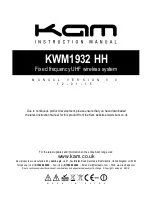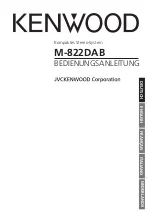
MERLIN LEGEND Communications System Release 5.0
Feature Reference
555-650-110
Issue 1
June 1997
Features
Page 35
Allowed/Disallowed Lists
list of numbers that the caller is allowed to dial, despite restrictions. For example,
an Allowed List assigned to an outward-restricted extension can allow calls to
specific local numbers, such as (911) or toll numbers. For toll-restricted
extensions, an assigned Allowed List can allow calls to specific area codes and/or
exchanges needed for daily tasks.
A Disallowed List is a list of local or toll numbers that the extension user is not
allowed to dial, even if the extension is otherwise unrestricted. Disallowed Lists
can be used as an alternative to or in conjunction with calling restrictions.
Both Allowed Lists and Disallowed Lists are assigned to individual extensions.
Allowed and Disallowed Lists can also be used in conjunction with Remote
Access to restrict calls made through the system from remote locations. In this
case, Allowed and Disallowed Lists can be assigned to either specific remote
access barrier codes or (if barrier codes are not used) to specific types of
lines/trunks (all tie/DID and all non-tie/non-DID trunks).
When an Allowed List is assigned to a barrier code or remote access lines/trunks,
the remote access user using that code can dial specific numbers included in the
list. When a Disallowed List is assigned to a barrier code, the remote access user
using that code cannot reach the specific numbers included in the list.
If barrier codes are not used for remote access, then Allowed and Disallowed
Lists for remote access users can be assigned to all tie/DID trunks and all
non-tie/non-DID trunks.
A Night Service Allowed List can be programmed with up to 10 numbers that
anyone can dial without having to enter a Night Service password. For additional
information, see
Star Codes and Allowed/Disallowed Lists
0
In some instances, after a person dials a
star code
(a star digit followed by a 2- or
3-digit number), the central office provides a second dial tone as a prompt for the
dialer to enter more digits. Generally, this second dial tone is immediate.
However, in cases when the second dial tone is delayed, calls can be misrouted
or dishonest users may be able to circumvent communications system dialing
restrictions.
In Release 3.1 and later systems, the system manager can enter the star digit (*)
in Allowed List and Disallowed List entries. The communications system can also
be programmed with a delay period (see
‘‘Second Dial Tone Timer’’ on page 545
)
during which no dialing is allowed while the central office dial tone returns. If
dialing is attempted, the call is treated as though it had violated calling restrictions
and is not completed.
The star codes that the system recognizes are as follows:
■
2-digit codes:
*
(00–19, 40–99)
















































